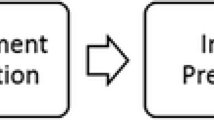Abstract
In 1975, fire losses in the United States totaled about 0.25% of the GNP, or 4.4 billion dollars. Statistics on distribution of fire types show that 30% involve residential dwellings; 10% industrial, institutional, and educational buildings; 21% are due to transportation-related factors; and the remaining 38% include forest, grassland, and rubbish fires. These statistics show that industrial and public facilities account for almost 50% of the financial loss statistics, while residential and transportation losses amount to 36 and 11% of the total, respectively. More than 60% of fire fatalities are attributed to building fires, and of these, almost 90% occur in private residences.
This brief survey reveals that a relatively small number of fires are responsible for the major dollar losses, and the major loss of life in fires results from residential fires, where the number of fatalities per fire are relatively small.
Can technology be applied to reduce either the financial disaster incurred during industrial fires, or the life loss in residential fires? The evidence indicates that residential fire mortality will not be significantly reduced by technical solutions. However, there is also the potential for large life loss in industrial fires, and these could be reduced significantly by technical solutions. Therefore, increased efforts to secure the optimum amount of industrial fire protection could certainly reduce our financial losses, and possibly protect more lives.
Similar content being viewed by others
References
Aviation Week and Space Technology: April 12, 1976, ‘Fire Cited in Varig 707 Crash Near Orly’, p. 20.
Berl, W. G. and Halpin, B. M.: to be published, ‘Fire-Related Fatalities: An Analysis of Their Demography, Physical Origins and Medical Causes’, presented at Symposium on Fire Standards and Safety, NBS, Washington, D.C., April 5 and 6, 1976.
NRC; August 4, 1975: ‘NRC Report on Browns Ferry Fire’, Atomic Energy Clearing House, Congressional Information Bureau, Inc., Washington, D.C., 20005, Vol. 21, No. 31.
Patterson, D. E.: January 1970, ‘The Rocky Flats Fire’, Fire Journal Soc. Fire Protection Engrs., November 1973, ‘Bimonthly Fire Record’, Fire Journal, p. 59.
SFPE: 1976, ‘1975 Fire Statistics’, Society of Fire Protection Engineers, 60 Batterymarch St., Boston, Mass. 02110, Bulletin 76-2, p. 4.
Author information
Authors and Affiliations
Additional information
This work was performed under the auspices of the U.S. Energy Research and Development Administration under contract No. W-7045-Eng-48.
Rights and permissions
About this article
Cite this article
Alvares, N.J. Tradeoffs between residential and industrial fire protection for ultimate public safety. Water Air Soil Pollut 7, 225–235 (1977). https://doi.org/10.1007/BF00280864
Received:
Issue Date:
DOI: https://doi.org/10.1007/BF00280864




